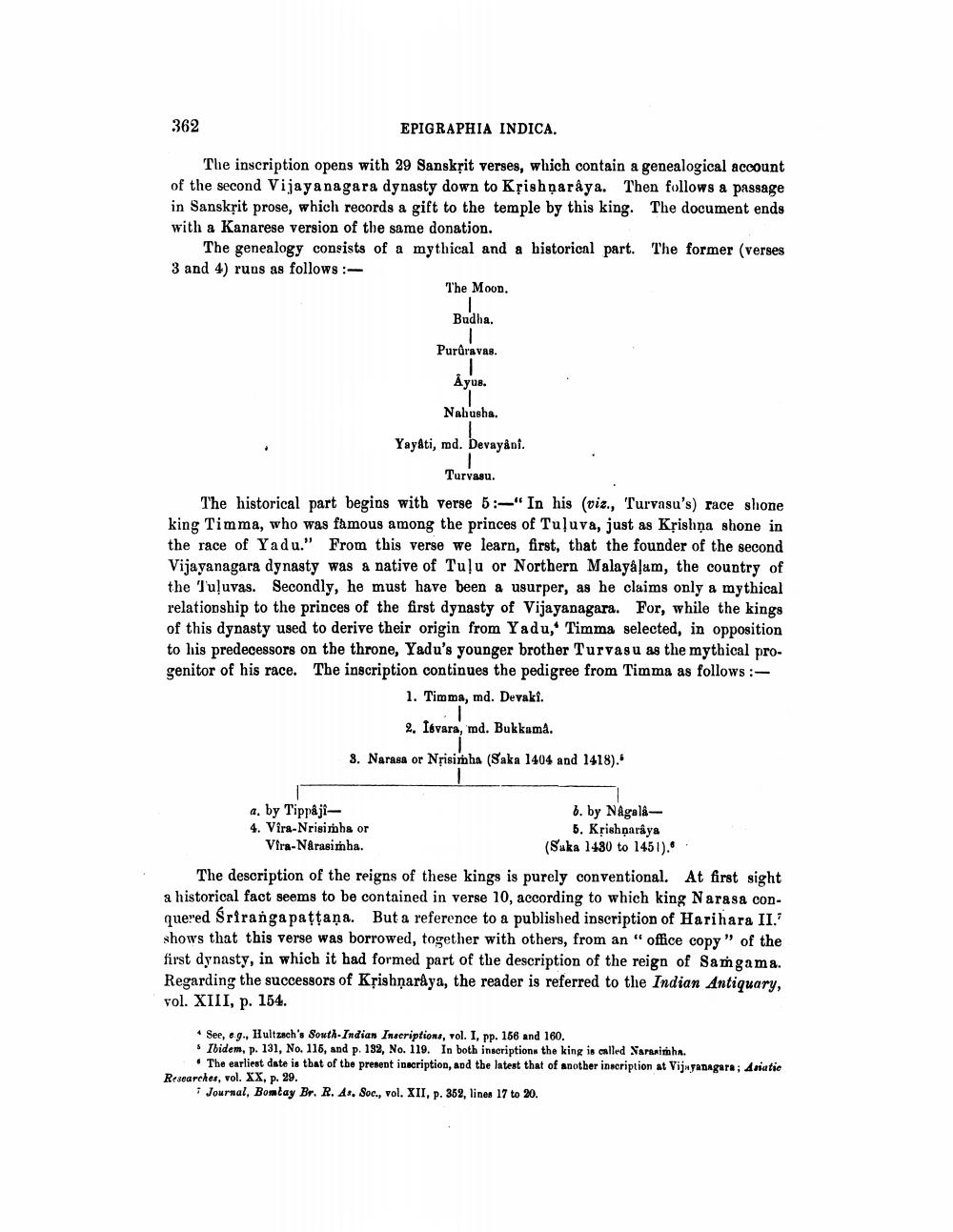________________
362
EPIGRAPHIA INDICA.
The inscription opens with 29 Sanskřit verses, which contain a genealogical account of the second Vijayanagara dynasty down to Krishộaraya. Then follows a passage in Sanskrit prose, which records a gift to the temple by this king. The document ends with a Kanarese version of the same donation.
The genealogy consists of a mythical and a historical part. The former (verses 3 and 4) runs as follows:
The Moon.
Budha.
Purgra vas.
Ayus.
Nabusha.
Yayati, md. Devayani.
Turvasu.
The historical part begins with verse 5:-" In his (viz., Turvasu's) race shone king Timma, who was famous among the princes of Tuluva, just as Krishna shone in the race of Yadu." From this verse we learn, first, that the founder of the second Vijayanagara dynasty was a native of Tuļu or Northern Malayalam, the country of the Tuļuvas. Secondly, he must have been a usurper, as he claims only a mythical relationship to the princes of the first dynasty of Vijayanagara. For, while the kings of this dynasty used to derive their origin from Yadu, Timma selected, in opposition to his predecessors on the throne, Yadu's younger brother Turvasu as the mythical progenitor of his race. The inscription continues the pedigree from Timma as follows :
1. Timma, md. Devaki.
2. Isvara, md. Bukkama. 8. Narasa or Nrisimha (Saka 1404 and 1418).
a. by Tippaji
6. by Nagala4. Vira-Nrisimhs or
5. Krishộaraya Vfra-Narasimha.
(Suka 1430 to 1451). The description of the reigns of these kings is purely conventional. At first sight a historical fact seems to be contained in verse 10, according to which king Narasa conquered Srirangapattaņa. But a reference to a published inscription of Harihara II. shows that this verse was borrowed, together with others, from an "office copy" of the first dynasty, in which it had formed part of the description of the reign of Samgama. Regarding the successors of Křishnaraya, the reader is referred to the Indian Antiquary, vol. XIII, p. 154.
* See, e.g., Hultzach's South Indian Inscriptions, vol. I, pp. 156 and 160.
Ibidem, p. 131, No. 116, and p. 132, No. 119. In both inscriptions the king is called Narasimha.
• The earliest date is that of the present inscription, and the latest that of another inscription at Vijayanagara; Asiatic Researches, vol. XX, p. 29.
* Journal, Bombay Br. R. As. Soc., vol. XII, p. 362, lines 17 to 20.




